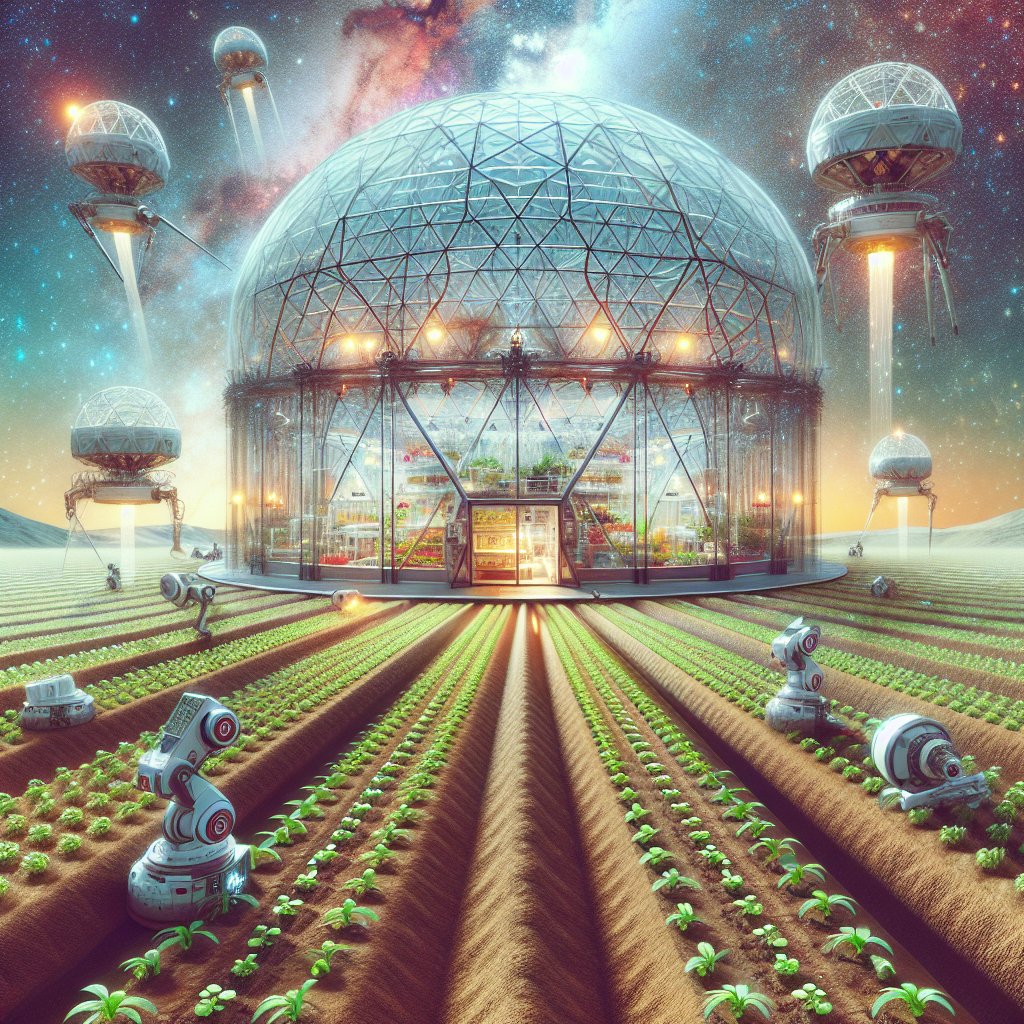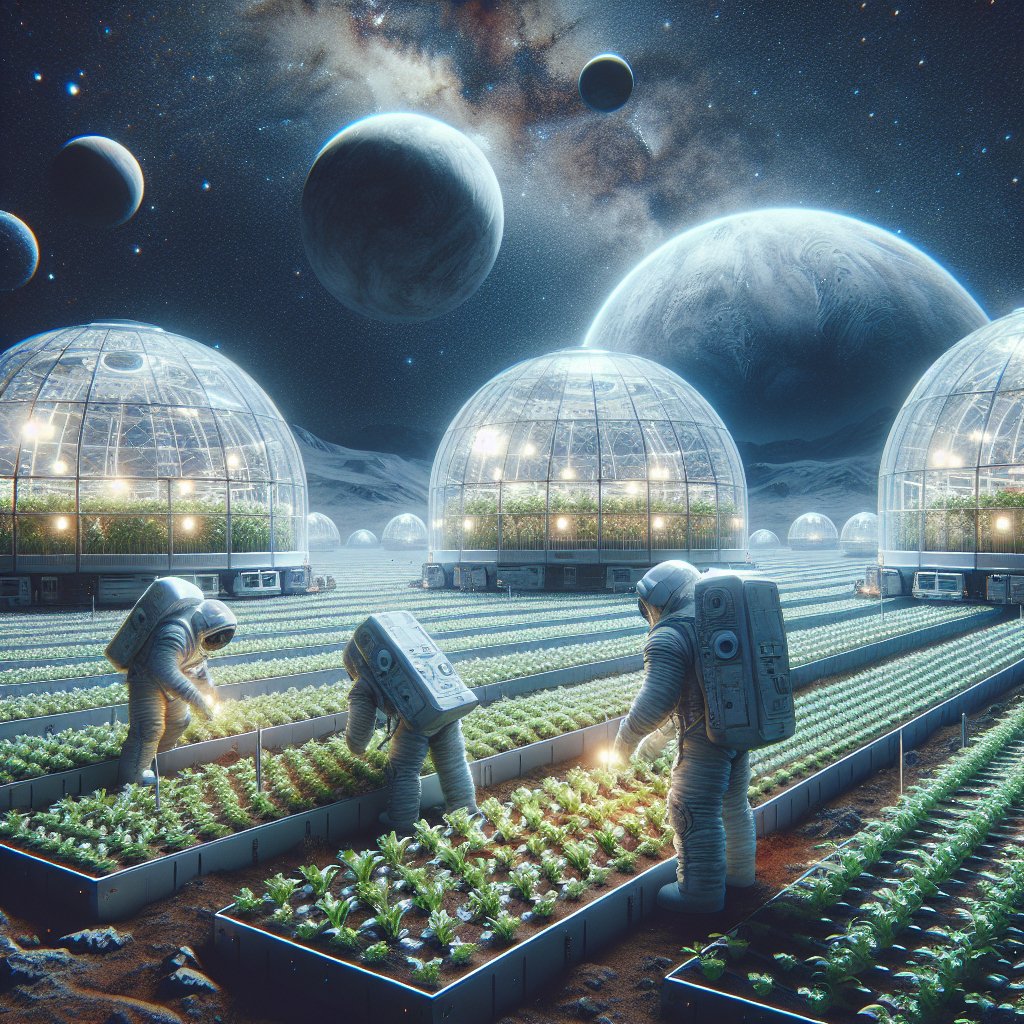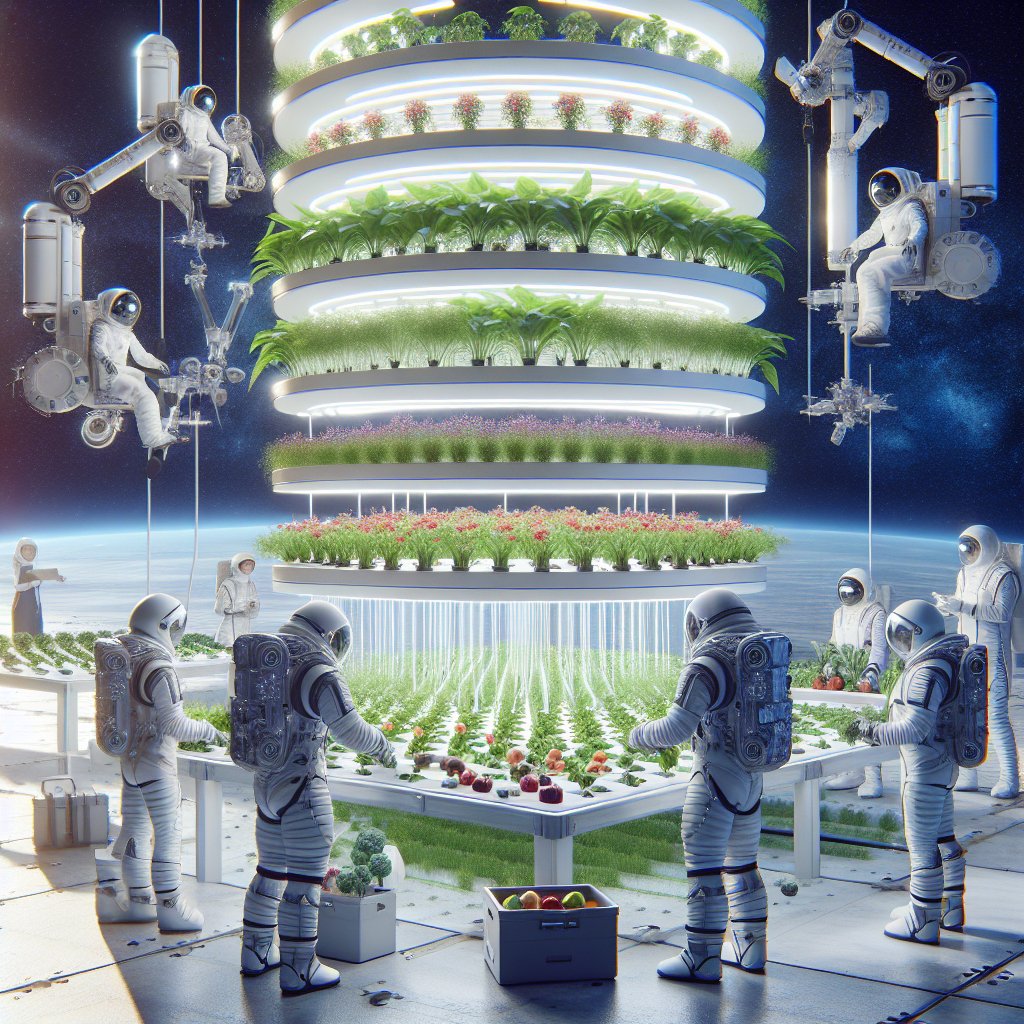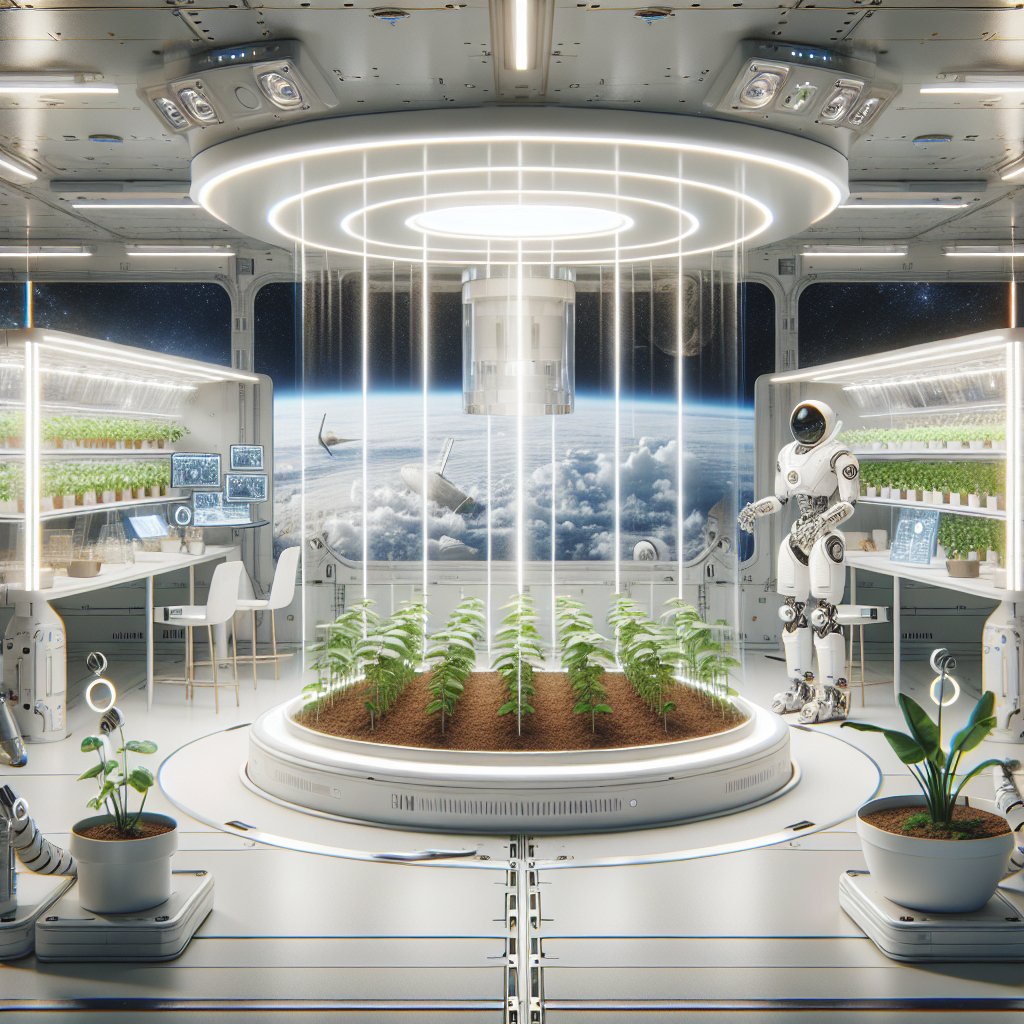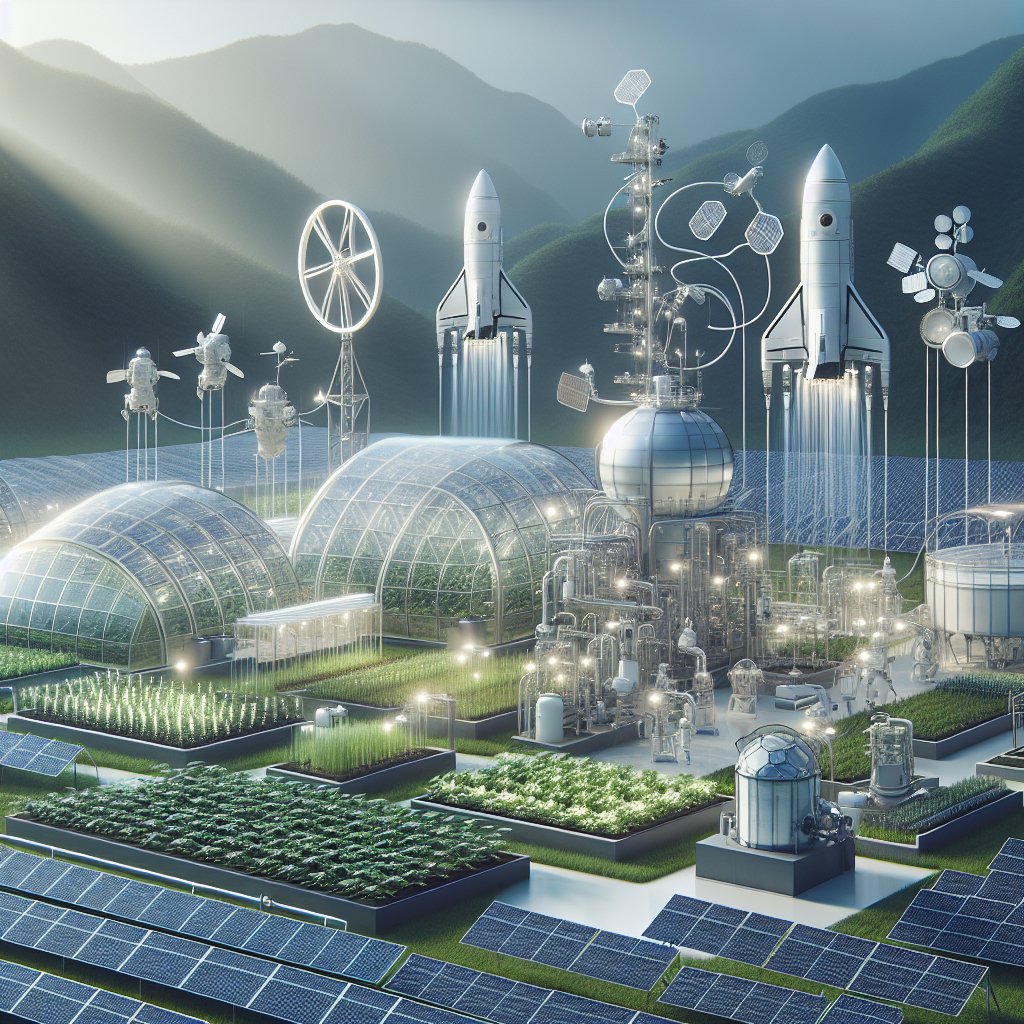The intersection of robotics and agriculture in space exploration presents a fascinating frontier that combines cutting-edge technology with the fundamental need for food production. As humanity sets its sights on long-term missions to the Moon, Mars, and beyond, the challenges of sustaining life in extraterrestrial environments become increasingly apparent. This article delves into the innovative ways robotics is transforming agricultural practices in space, exploring the potential for sustainable food systems that could support future astronauts and colonists.
Robotics in Space Agriculture
Robotics has revolutionized many industries on Earth, and agriculture is no exception. In the context of space exploration, robotic systems are being developed to address the unique challenges posed by growing food in microgravity and other harsh environments. These systems not only enhance efficiency but also ensure that astronauts have access to fresh produce during their missions.
Automated Farming Systems
Automated farming systems are at the forefront of agricultural innovation in space. These systems utilize advanced robotics to perform tasks such as planting, watering, and harvesting crops. For instance, NASA’s Veggie experiment aboard the International Space Station (ISS) has demonstrated the feasibility of growing lettuce and other crops in microgravity. The Veggie system employs a combination of LED lighting, hydroponics, and automated watering to create an optimal growing environment.
One of the key advantages of automated farming systems is their ability to operate with minimal human intervention. This is particularly important in space, where astronauts have limited time and resources. By using robotics, tasks can be performed efficiently, allowing crew members to focus on other critical aspects of their missions. Furthermore, these systems can be designed to monitor plant health and environmental conditions, ensuring that crops receive the necessary care even in the absence of direct human oversight.
Robotic Harvesting
Harvesting crops in space presents unique challenges, especially in a microgravity environment. Traditional harvesting methods may not be effective, necessitating the development of specialized robotic systems. Researchers are exploring the use of robotic arms and drones equipped with sensors to identify ripe produce and harvest it without damaging the plants. These robotic harvesters can be programmed to operate autonomously, further reducing the workload for astronauts.
Additionally, robotic harvesting systems can be designed to adapt to different types of crops, making them versatile tools for space agriculture. As missions to Mars and beyond become more feasible, the ability to efficiently harvest food will be crucial for sustaining long-term human presence on other planets.
Challenges and Solutions in Space Agriculture
While the integration of robotics into space agriculture offers promising solutions, several challenges remain. These challenges include the need for reliable systems that can function in extreme conditions, the development of suitable crops for space environments, and the management of resources such as water and nutrients.
Environmental Control
Creating a controlled environment for growing crops in space is essential for success. Factors such as temperature, humidity, and light must be carefully regulated to ensure optimal growth. Robotics plays a vital role in this aspect by enabling precise control over these environmental variables. Automated systems can adjust lighting based on the growth stage of the plants, while sensors can monitor humidity levels and activate irrigation systems as needed.
Moreover, the use of closed-loop systems can help recycle water and nutrients, minimizing waste and ensuring that resources are used efficiently. These systems can be integrated with robotic technologies to automate the monitoring and adjustment processes, further enhancing sustainability in space agriculture.
Crop Selection and Genetic Engineering
Not all crops are suitable for growth in space. Researchers are investigating which plants can thrive in microgravity and limited resources. Fast-growing, nutrient-dense crops such as lettuce, radishes, and herbs have shown promise in initial experiments. However, to expand the variety of crops available for astronauts, genetic engineering may play a crucial role.
By modifying the genetic makeup of certain plants, scientists can enhance their resilience to harsh conditions, improve their nutritional content, and reduce their growth time. Robotics can assist in this process by automating the planting and cultivation of genetically engineered crops, allowing for rapid experimentation and adaptation to the unique challenges of space environments.
The Future of Space Agriculture and Robotics
The future of space agriculture is inextricably linked to advancements in robotics. As technology continues to evolve, the potential for creating self-sustaining agricultural systems in space becomes more attainable. The lessons learned from current experiments aboard the ISS will pave the way for more ambitious projects, such as establishing greenhouses on the Moon or Mars.
Collaboration and Research
Collaboration between space agencies, agricultural researchers, and robotics engineers will be essential for overcoming the challenges of space agriculture. Initiatives like NASA’s Artemis program aim to return humans to the Moon and establish a sustainable presence there, providing an ideal testing ground for agricultural technologies. By working together, experts from various fields can develop innovative solutions that address the complexities of growing food in space.
Furthermore, international cooperation will be crucial as humanity embarks on the journey to explore other planets. Sharing knowledge and resources can accelerate the development of effective agricultural systems, ensuring that future missions are equipped to support human life for extended periods.
Implications for Earth Agriculture
The advancements made in space agriculture and robotics will not only benefit future space missions but also have significant implications for agriculture on Earth. Many of the technologies developed for space can be adapted to improve efficiency and sustainability in terrestrial farming. For example, automated systems for monitoring crop health and optimizing resource use can help address challenges such as food security and environmental degradation.
As the global population continues to grow, the need for innovative agricultural solutions becomes increasingly urgent. The intersection of robotics and agriculture in space exploration may provide valuable insights and technologies that can be applied to enhance food production on our home planet.
Conclusion
The intersection of robotics and agriculture in space exploration represents a groundbreaking area of research with the potential to transform how we grow food in extreme environments. As humanity prepares for long-term missions beyond Earth, the development of automated farming systems, robotic harvesting technologies, and sustainable agricultural practices will be essential for ensuring the health and well-being of astronauts. Moreover, the innovations born from these efforts will likely have far-reaching implications for agriculture on Earth, paving the way for a more sustainable future. By embracing the challenges and opportunities presented by space agriculture, we can not only support our exploration of the cosmos but also enhance our ability to feed a growing global population.
